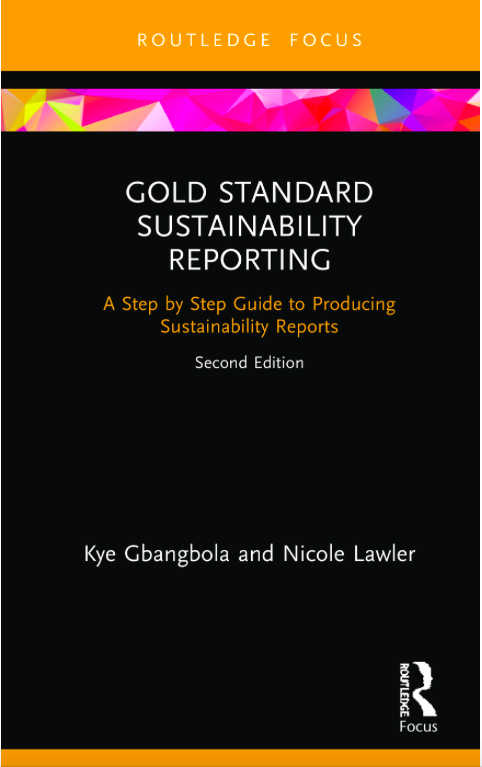
To assert their green credentials, many companies in the sector have turned to BS 8555 or ISO 14001 for Environmental Management, but both have their disadvantages. With ISO 14001, for instance, companies can set their own targets, but the standard does not prescribe common metrics or key performance indicators, creating difficulties for anyone trying to draw comparisons between two organisations. For instance, carbon could be measured in kg, kg per £m of turnover or capital expenditure on a project, or kg per m2.
But now there’s an alternative that gives the construction sector a common understanding of sustainability and the metrics used to rank performance. The Global Reporting Initiative is a framework that helps companies of any size direct and improve their business performance. It enables direct comparisons between different companies to be drawn, and tangible benefits to be realised.
Many large contractors and property companies in the UK have already adopted the GRI, including British Land, Balfour Beatty, Berkeley Group, Tarmac, Kingspan, Willmott Dixon, Marshalls, AMEC, and Cemex UK. Marks & Spencer, which is already implementing the government’s Green Deal to retrofit domestic properties, also reports to the GRI standard. Wider take-up of the GRI could give the industry a standard that is comparable and rankable, enabling the sector to fully embed carbon reduction and sustainability in its operations.
In 2008, the UK Green Building Council set up a measurement and reporting task force, which concluded that every company was doing things differently, and that to avoid potential confusion the industry would benefit from a common reporting standard. The CIOB’s Carbon Reduction Group has also identified the same issue. On the task group’s recommendation, the UKGBC now requires news members to either adopt, or move towards adoption of, GRI.
The UKGBC has also been involved in drawing up the GRI’s Construction and Real Estate Sector Supplement (CRESS) — a version of the GRI’s generic guidelines adapted to incorporate issues of particular relevance to construction and property businesses. The latest version was published for consultation in March 2011.
The GRI is based on straightforward, standardised and readily-understood metrics: carbon emissions, for instance, are measured in kgCO2/m2/year. In most cases, the work of generating a report is carried out by a cross-functional sustainability team co-ordinated by a senior executive.
GRI is self-certified. Any company that wants to adopt the GRI can simply go to the website, download the necessary information and start to implement it. If a company is fairly confident of its ability to measure, it can start to collect the data, go through the methodologies and report to internationally-recognised standards without any cost, or registration fee. In contrast, it’s reasonable to estimate that administering ISO 14001 would cost several thousand pounds a year.
But to help companies develop capacity and confidence, training and support are available. The GRI vets and approves certified training partners (CTPs) to help companies use the GRI guidance and report. Our consultancy, Total Eco Management, is a CTP that works with SMEs and larger enterprises across the UK and Ireland. In January 2011 we started to offer courses to professionals and executives and also specific courses across the construction and property sector at the CIOB’s HQ in Ascot, which are equivalent to 16 hours of CPD.
The reporting process involves collaboration with different departments internally and with external stakeholders. Completed reports should include a GRI checklist of the performance indicators selected, and a self-declared assessment on a scale from A+ to C.
Reports can be sent to the GRI for the self-declaration assessment to be checked, which is free for “organisational stakeholders” who pay a fee on a sliding scale related to turnover, currently €100 (£87) a year for turnover up to €1m (£870,000), or €500 (£436) for companies with turnovers up to €100m (£87m). Alternatively, it’s possible to pay a one-off fee of £1,500. This step is not compulsory and not every company aligned with the system chooses to do it. But there is often a wide variation in reports, and working with GRI CTPs can help organisations to achieve excellence.
As we get closer to 2050 and its legally-binding target of an 80% cut in carbon emissions, it’s likely that those organisations that can’t show they are operating to high sustainability standards will increasingly be overlooked. The GRI provides an accessible and globally-recognised framework for companies that want to move towards a leadership position in a competitive marketplace.
from → Kye Gbangbola FCIOB CEnv MIEMA
Kye is a member of the CIOB’s Carbon Reduction Task Group.















 RSS Feed
RSS Feed
